radiello® Diffusive Air Sampling Application - Volatile Organic Compounds (VOCs) Chemically Desorbed With CS2
radiello® Components Used:
White diffusive body Product No. RAD120
Supporting plate Product No. RAD121
Vertical adapter Product No. RAD122 (optional)
Adsorbing cartridge Product No. RAD130
Or try VOCs Chemically Desorbed Starter Kit Product No. RAD130S
- 1 Support plate
- 1 White diffusive body
- 1 Vertical adapter
- 2 Cartridge adsorbent w/Activated Charcoal
Principle
Cartridge RAD130 is a stainless steel net cylinder, with 100 mesh grid opening and 5.8 mm diameter, packed with 530 ± 30 mg of activated charcoal with particle size 35-50 mesh. Volatile organic compounds are trapped by adsorption and recovered by carbon disulfide displacement, analysis is performed by FID gas chromatography.
Sampling Rates
The table below lists sampling rate values at 298 K (25 °C) and 1013 hPa, experimentally measured in a standard atmosphere chamber. For other compounds, whose diffusion coefficient1 is known, sampling rate can be calculated according to equation 5, taking into account that white diffusive body and RAD130 cartridge give the geometric constant of radiello the value of 14.145 ± 0.110 cm. Several experiments performed in the standard atmosphere chamber demonstrate that the calculated sampling rates seldom deviate by more than ± 10% from the experimentally measured values.
Effect of Temperature, Humidity, and Wind Speed
Sampling rates varies from the value at 298 K on the effect of temperature (in Kelvin) as expressed by the following equation

where QK is the sampling rate at the temperature K and Q298 is the reference value at 298 K. This produces a variation of ± 5% for 10 °C variation (upwards or downwards) from 25 °C. Sampling rate is invariant with humidity in the range 15-90% and with wind speed between 0.1 and 10 m·s-1.1
Sampling Rate Values Q at 25 °C (298 K) |
|---|
Notes:
a = weakly adsorbed compound. If its concentration is higher than the TLV for the workplace environments it may be partially displaced by other compounds that are more strongly trapped if their concentration is also high. If this is the case, it is advisable to reduce sampling time under 8 hours.
b = prolonged exposure of charcoal cartridges at relative average humidity higher than 80% causes adsorption of up to 100 mg of water. Water does not interfere with adsorption mechanisms but is displaced by carbon disulfide and gives raise to a separate layer. Some very water soluble polar compounds will distribute between the two solvents, thus provoking an underestimation of the actual air concentration since only the carbon disulfide is injected in the gas chromatograph. When the concentration of polar compounds has to be determined, the calibration curve should be prepared by spiking 50 μl of water in each tube containing the cartridge and the 2 mL of carbon disulfide standard solution (see Analysis).
c = better reproducibility obtained by use of methanol as extraction solvent instead of carbon disulfide.
Calculations
The listed sampling rate values already take into account for the desorption efficiency with carbon disulfide. The average concentration over the exposure time interval is therefore calculated from the mass of analyte found onto the cartridge and exposure time without introducing any corrective factor, apart from corrections due to average temperature different from 25 °C.
Average concentration over the whole exposure time is calculated according to the following expression

where:
m = mass of analyte in μg
t = exposure time in minutes
Limit of Quantitation
The limit of quantitation depends on the instrumentation and on the analytical conditions. The minimum revealable environmental concentration can be estimated on the basis of the equation on page D1, where m is the minimum revealable mass, experimentally measured for each compound. Under the analytical conditions described on page D4, the limit of quantitation for 7 days exposure usually ranges from 0.05 to 1 μg·m-3, depending on the compound.
Exposure
Cartridge RAD130 has a very large loading capacity: about 80 mg, corresponding to an overall VOCs concentration of 3,000-3,500 mg·m-3 sampled for 8 hours or 70,000-80,000 μg·m-3 sampled for 14 days. Neverthless, if the quantified overall adsorbed mass should be near 80 mg, sampling rate could have deviated from linearity. If this is the case, it is advisable to repeat the sampling experiment reducing exposure time.
Workplace Environment
In workplace environments complex mixtures of airborne solvent vapours are often found at concentrations of 2,000-3,000 mg·m-3. The outstanding adsorbing capacity of RAD130 cartridges allows you to sample them for the whole working shift of 8 hours. On the other hand, the very high values of sampling rates for a variety of compounds allow you to perform accurate concentration measurements even after very short exposures. For example, 15 minutes are enough to measure 0.1 mg·m-3 of benzene.
radiello can therefore be employed to evaluate both TWA and STEL concentrations.
Other Indoor Sampling Experiments and Outdoor Campaigns
High sampling rates of radiello ensure very low limits of detection also for short exposure time intervals. For example, you may measure benzene concentrations as low as 2 μg·m-3 with an error not exceeding 4% after 8 hours of exposure. If radiello is exposed for 7 days, limit of quantitation becomes 0.1 μg·m-3.
Generally speaking, we suggest exposure time duration ranging from 8 hours to 30 days, the ideal value being 7 days.
Storage
The activated charcoal cartridges have undergone a complex conditioning process that ensures an outstanding chromatographic blank level, never exceeding three times the instrumental noise of a FID detector at the lowest attenuation.
Kept in a cool place and away from volatile organic compounds, the cartridges maintain unchanging blank level and adsorbing capacity for at least two years. Expiry date and lot number are printed onto the plastic bag wrapping each cartridge: its integrity stands as warranty seal.
After exposure the cartridges, well capped and kept in a cool and solvent-free place, maintain their content unalterated for at least six months.
Analysis
Extraction
Introduce 2 mL of CS2 and 100 μl of internal standard solution directly in the radiello glass tube without drawing out the cartridge. Always use class A volumetric pipettes or dispensers. Stir from time to time for 30 minutes. If analysis is not performed soon after, draw out the cartridge and discard it.
Calibration
Outdoor Environment Sampling
If benzene, toluene, ethylbenzene and xylenes (BTEX) have to be analyzed, prepare three or four standard solutions in CS2 having decreasing concentrations of the analytes in the following ranges (in mg·l-1):
It is advisable to proceed via consecutive dilutions, starting for example from a stock solution containing 1 mL of each compound in 100 mL. Always use class A volumetric glassware. Introduce 2 mL of each standard solution, along with 100 μl of internal standard, onto a blank RAD130 cartridge in its glass tube.
Important: Always use high-purity grade CS2
Caution: Even refrigerated, CS2 permeates the tube plastic cap: its volume decreases by 4-5% a day. If the internal standard has been added, it is only matter of unpleasant odor
Analysis of Unknown Samples
Identify the sample that has been exposed for the longest time or at the highest expected concentration. Introduce 2 mL of CS2 but do not add the internal standard, stir and let the sample stand for 30 minutes. Without discarding the cartridge, inject the CS2 solution in the gas chromatograph with FID detector (see below), identify the compounds appearing in the chromatogram and make an estimation of the order of magnitude of their concentrations.
Prepare a CS2 solution of the identified compounds with doubled concentration with respect to the sample. Dilute this solution in order to obtain standard solutions of concentration respectively about 0.1, 0.5 and 1 times the concentration estimated in the sample. Introduce 2 mL of each standard solution onto a blank RAD130 cartridge in its glass tube, along with the chosen internal standard solution.
The chosen internal standard should have a retention time that does not interfere with other compounds in the chromatogram. Compatibly with this requirements, we suggest to use a solution of 2-fluorotoluene in CS2 with concentration of 100 μl·l-1 for outdoor samples and 2 mL·l-1 for workplace samples.
Add 2 mL of CS2 and the internal standard to all of the samples, stir, let the samples stand for 30 minutes and discard the cartridges prior to the analysis.
User Tip
For a very accurate calibration we offer the preloaded cartridges RAD405 (outdoor environment) and RAD406 (workplace environment).
Instrumental Analysis (advised)
Capillary Gas Chromatography With FID Detection
Outdoor environment samples: 100% dimethylpolysiloxane column 50m x 0.2mm, film thickness 0.5 μm; split injection of 2 μl; split ratio 25:1; nitrogen carrier gas at constant pressure of 20 psi; injector temperature 240 °C; oven initial temperature 35 °C for 5 minutes, 5 °C/min up to 90 °C, maintain for 3 minutes, 10 °C/min up to 220 °C, final isotherm for 5 minut
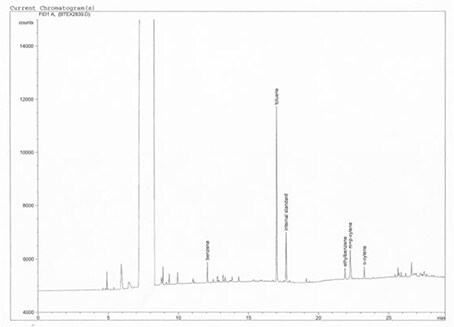
Figure 1.Chromatogram of Urban Outdoor Sample
Workplace samples: 100% dimethylpolysiloxane column 0.2 mm·50 m, film 0.5 μm; split injection of 3 μl, split ratio 100:1; carrier N2 at constant pressure of 20 psi; injector temperature 240 °C; oven initial temperature 50 °C for 5 minutes, 5 °C/min up to 80 °C, 15 °C/min up to 135 °C, 20 °C/min up to 220 °C, final isotherm 10 minutes. Total time: 29 minutes. The retention times for several compounds analyzed under the described conditions are listed below.
FID Chromatogram of Workplace Sample
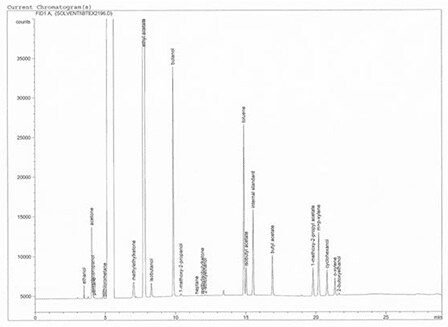
Figure 2.FID Chromatogram of Workplace Sample
User Tip
If you perform several analyses, a barcode reader will greatly improve productivity in your laboratory and will also minimize the possibility of errors in the copying of sample labels. Please contact us to help you in the implementation of the reader. We have also developed software solutions for the analytical data processing and automated production of analysis reports.
What makes the RAD130 cartridge incomparable?
The container is made of stainless steel cloth AISI 316 with 100 mesh grid opening. It is electric welded with no supply of foreign materials. It has tolerance of ± 0.05 mm diameter and of ± 0.1 mm length.
The cartridge is packed with vegetal activated charcoal with a very large adsorbing surface. Its exceptionally low blank is obtained by conditioning it in a nitrogen stream fluidised bed at 450 °C for 16 hours. The fluidised bed technique does not only guarantee the thorough purification of adsorbing material but also performs an accurate selection of its granulometry, by ventilation separations of the fraction under 50 mesh and over 35 mesh.
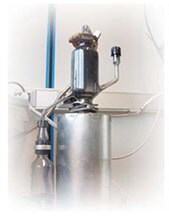
The Container & Contents
The container is made of stainless steel cloth AISI 316 with 100 mesh grid opening. It is electric welded with no supply of foreign materials. It has tolerance of ± 0.05 mm diameter and of ± 0.1 mm length.
The cartridge is packed with vegetal activated charcoal with a very large adsorbing surface. Its exceptionally low blank is obtained by conditioning it in a nitrogen stream fluidised bed at 450 °C for 16 hours. The fluidised bed technique does not only guarantee the thorough purification of adsorbing material but also performs an accurate selection of its granulometry, by ventilation separations of the fraction under 50 mesh and over 35 mesh.
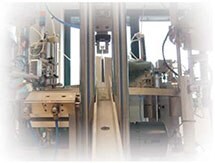
The Production
The cartridge is filled up with charcoal by a very complex automated apparatus that was designed and realised in our laboratory. It avoids any contamination of the adsorbing material during the delicate process of cartridge production and ensures a very accurate dosing of the material itself, providing a variability of less than 2% of the weight of the activated charcoal among the cartridges
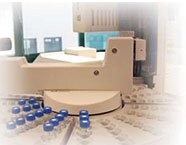
The Quality Control
Each cartridge batch undergoes statistical quality control of the blank level. If amounts higher than 20 ng of each of the BTEX compounds are found, the entire lot is discarded.
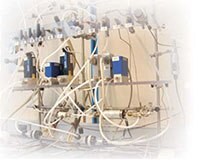
The Sampling Rate Measurements
The sampling rate is measured in a standard atmosphere chamber unique in Italy (and one of the few found all over Europe) that allows the dynamic generation of high flows of controlled concentration gas mixtures from 1 μg·m-3 to 1,000 mg·m-3 (dynamic range from 1 to 106) of each investigated compound alone or mixed with others. The chamber allows temperature control from -20 to 60 °C, relative humidity control from 5% to 100% and air speed variation from 0.1 to 10 m·s-1.
All of the gas flows are measured as mass flows and have therefore the properties of primary standards. All of the operating parameters (gas flows, temperature, relative humidity, ...) are recorded and the records are available along with the certification documents.
References
如要继续阅读,请登录或创建帐户。
暂无帐户?